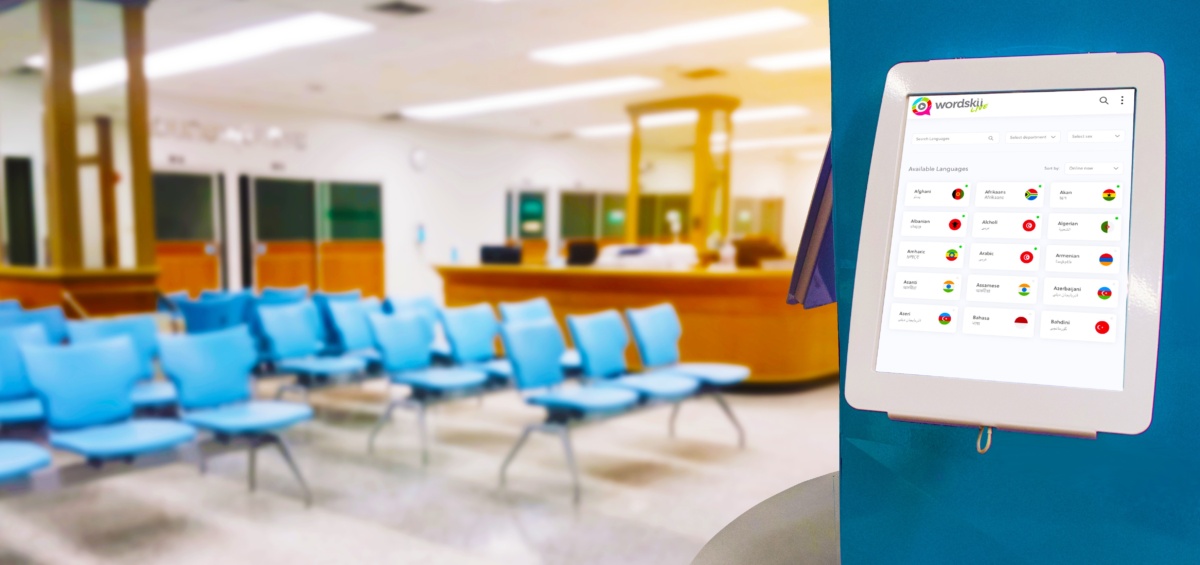Video Interpreting – Why so many departments are making the switch.

With the current outbreak of COVID-19 increasing momentum, the precautionary measures taken by the healthcare sector must be adhered to in all areas. It should then come as no surprise that the number of NHS organisations relying solely on remote interpreting (speaking to patients through the use of an interpreter who is not onsite either by telephone or video link) is constantly rising. While the current global situation has undoubtedly influenced the recent spike in uptake of remote interpreting, there has been a steady rise in demand for digital language services over the course of the last year as primary and acute care adopt the long term vision of NHS Digital.
Healthcare is changing
As an interpreting agency, our primary concern when delivering any form of cross-culture communication is maintaining the empathy which is essential for both medical interpreting and welfare situations.
Video interpreting presents as an outlier in the currently available digital modes of interpreting, as it preserves the visual cues of physical interpreting while still allowing for modernisation of the language industry.
The instinct to adapt, evolve and survive has prompted multiple departments in the healthcare sector to turn towards video interpreting as their preferred method of communication. For the patient, who can otherwise feel stranded without a link across the language barrier, the ability to view the interpreter providing said link can be a great comfort.
Departments relating to mental health, and other related therapies, particularly benefit from this asset of video interpreting, as it adds an additional level of sensitivity where other forms of remote interpreting – such as telephone interpreting – fall short.
Telephone vs Video
Arguably, the biggest pitfall of telephone interpreting is its lack of accessibility – a problem which video interpreting fixes with ease. For deaf patients who require a British Sign Language interpreter, they are often boxed out of digital advances in language technology that claim to be a benefit for all. Although it may seem like a simple fix, the ability to do a three-way call with visual aid means sign language users are no longer excluded from digital language services. Many departments are making the switch to video interpreting precisely because it truly is accessible for all.
There is no doubt that the use of video interpreting will continue to rise over the coming months as the language industry grapples with the effects of COVID-19.
Video interpreting is the most powerful tool that we can offer amid this global crisis, as it not only embodies the worldwide call for social distancing but ensures that the indispensable communication that trademarks the industry still takes place. The use of video in interpreting places a paramount on both patient and professional safety, ensuring that no individual is placed within close contact of another. It innovates many aspects of healthcare that would have previously relied on a physical interpreter. What this means for the current crisis is that patients who remain in isolation can still receive the vital communication assistance that we provide.
Don’t let social distancing stand in the way of interpreting. If you are interested in video interpreting, or the other services we provide, please contact us on 0121 554 1981 or email us at getintouch@word360.co.uk.

Elliot Glynn
May 13, 2020Recent articles
Related Services
.png?width=600&height=300&name=Untitled%20design%20(2).png)
Video Interpreting
Our video interpreting service provides our clients with all the benefits of a face-to-face interpreter, with the added advantage of a remote and instant service.
.png?width=600&height=300&name=Untitled%20design%20(51).png)
Wordskii Live
Wordskii Live is our on-demand video interpreting service when and where you need it, in any language.
-1.png?width=600&height=300&name=Untitled%20design%20(13)-1.png)
Our Technology
Revolutionise the way your organisation accesses language services with Wordskii! Our Wordskii range of interpreting and translation software solutions deliver impact where you need it most, driving down costs and freeing up time.
